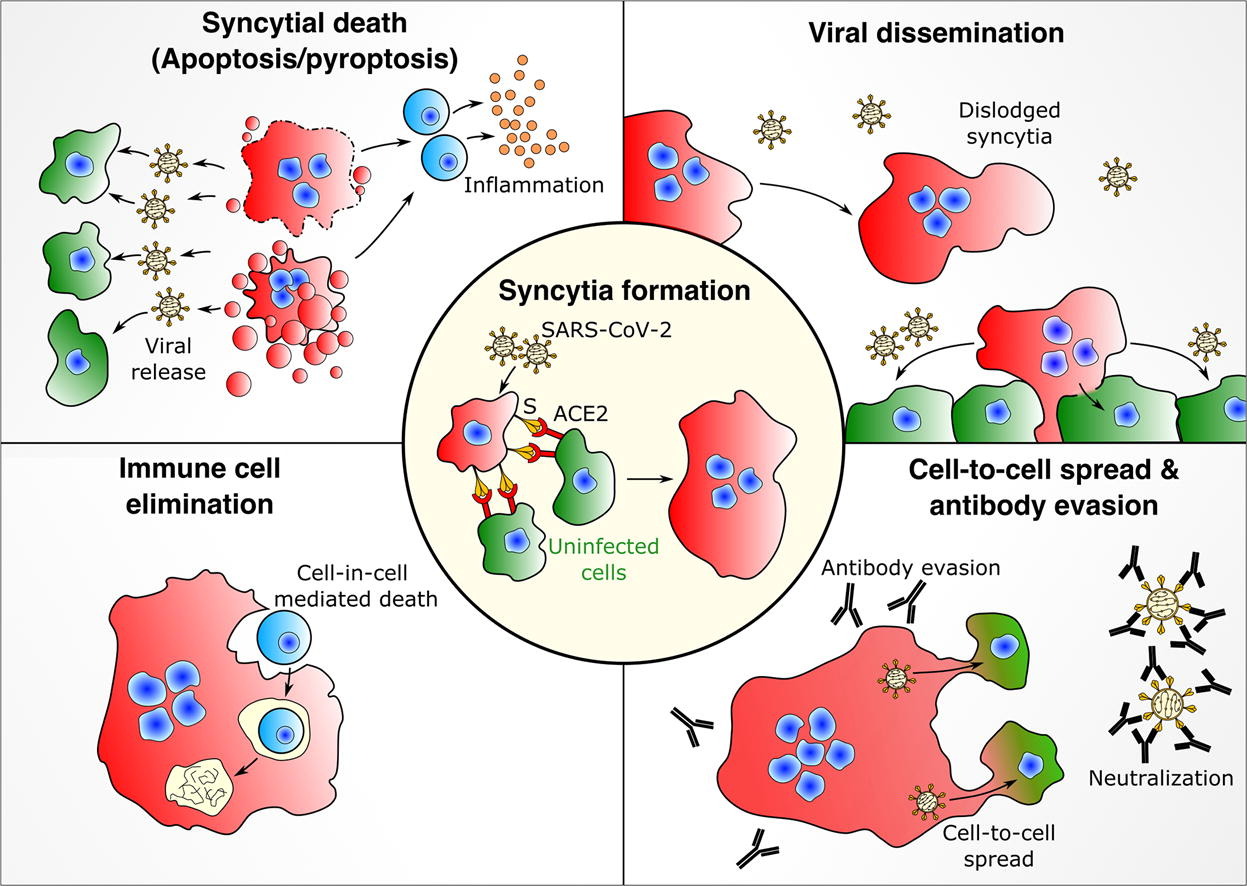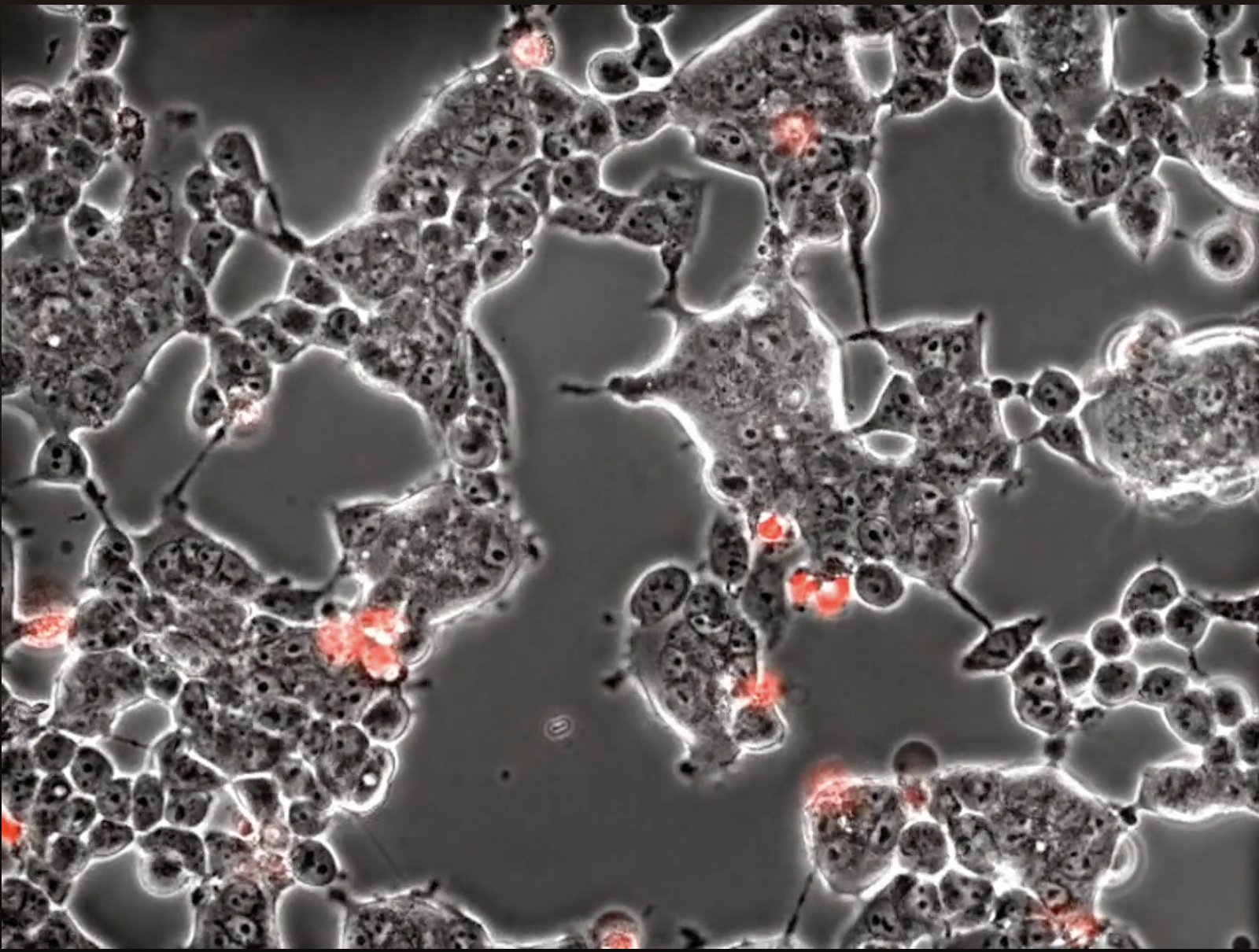SARS-CoV-2 is a syncytial virus
The word I was trying to remember about how SARS-CoV-2 does much of its damage is syncytia (plural of syncytium). I wasn't even in the ballpark on pronunciation:
syncytia: sin-sish'-uh
syncytium: sin-sish'-uhm
Conceptions in progress:
- By fusing host cells together—creating syncytia—viruses can travel from one host cell to the next without exiting, thereby hiding from host immune system.
- Hijacked cell/syncytium gives the virus access to everything/everywhere that kind of cell has access to.
Syncytia are formed when individual cells fuse. SARS-CoV-2 induces syncytia when the viral spike (S) protein on the surface of an infected cell interacts with receptors on neighboring cells. Syncytia may potentially contribute to pathology by facilitating viral dissemination, cytopathicity, immune evasion, and inflammatory response. [1]
Syncytia can also form when cells are infected with certain types of viruses, notably HSV-1, HIV, MeV, SARS-CoV-2, and pneumoviruses, e.g. respiratory syncytial virus (RSV). ... Because many cells fuse together, syncytia are also known as multinucleated cells, giant cells, or polykaryocytes. [2]


Still from fascinating video of syncytia forming in a bat's brain: A microscopic video shows the coronavirus on the rampage. - The New York Times.
I first encountered the word syncytia (I think) in The risk of Long COVID explained. - by Don Ford.